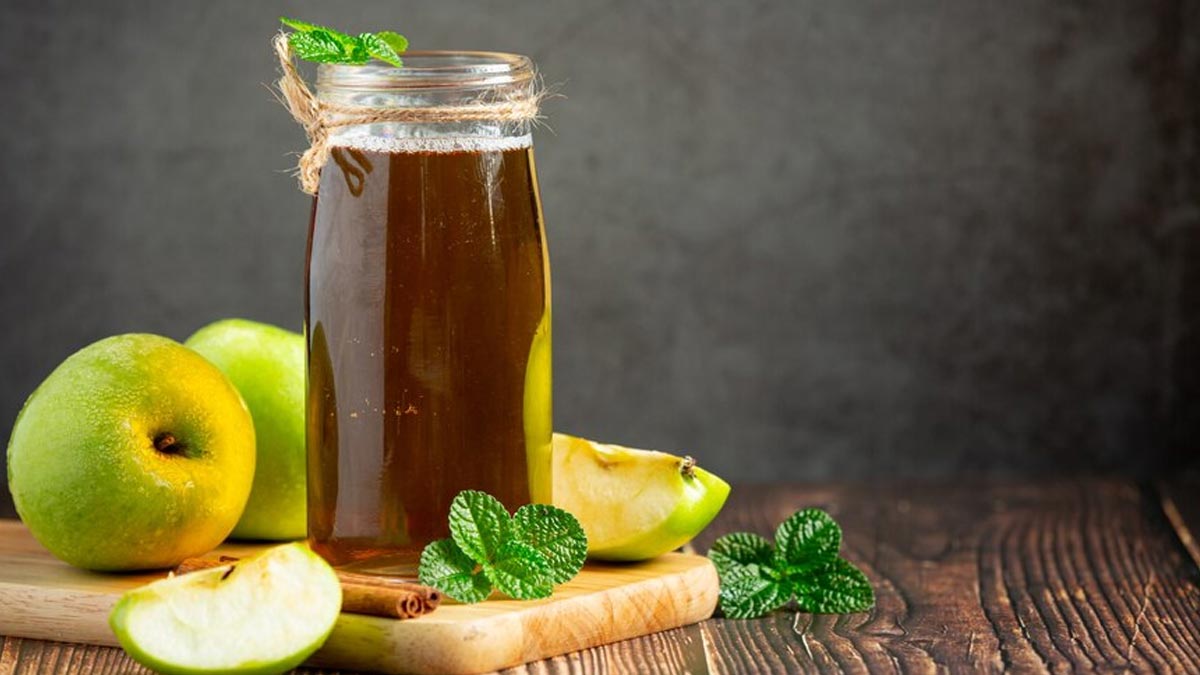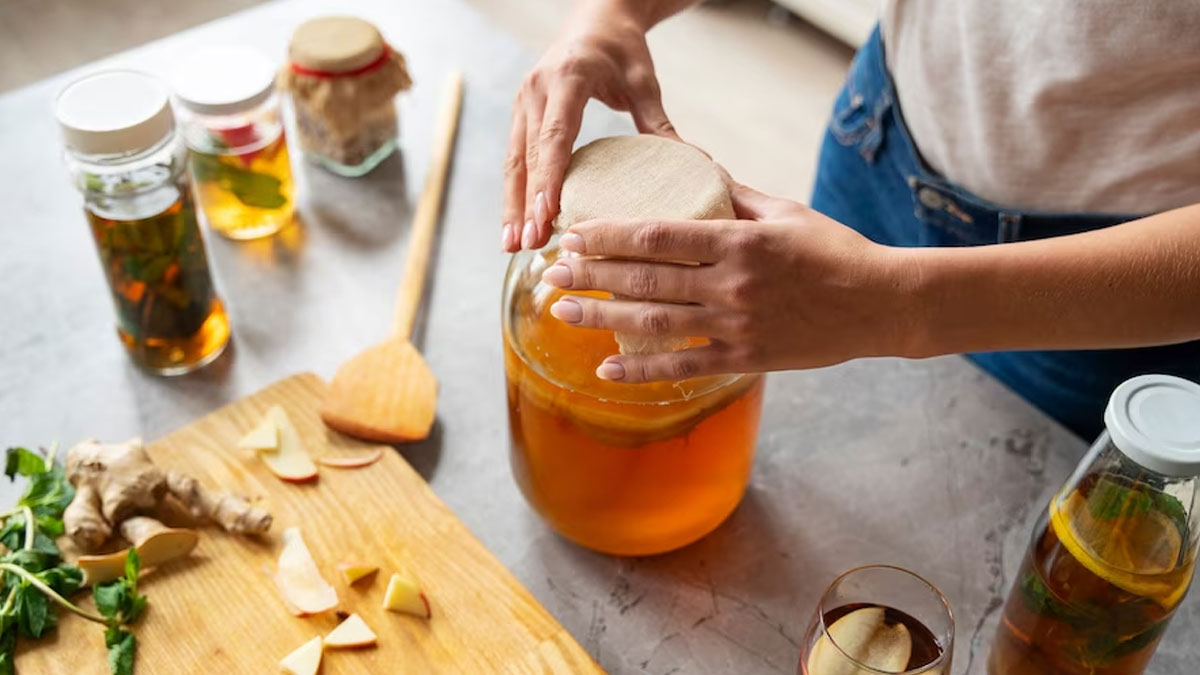

In the realm of health beverages, kombucha has gained widespread popularity for its unique taste and potential health benefits. Kombucha is a fizzy, fermented black tea that has been celebrated for centuries as a probiotic that can help manage chronic diseases.
A recent clinical trial by researchers from Georgetown University’s School of Health, University of Nebraska-Lincoln and MedStar Health revealed that people with Type 2 diabetes who drank kombucha for four weeks had lower blood glucose levels than when they consumed a similar-tasting placebo beverage.
Health Benefits of Kombucha

Kombucha offers the following health benefits, that make it an excellent addition to your daily diet:
- Rich in Probiotics: As Kombucha is a fermented drink, it is full of beneficial bacteria that can support gut health, aid digestion, alleviate bloating, and improve nutrient absorption. The abundance of probiotics in kombucha influences gut microbiota and can help your weight loss efforts.
- Antioxidant Power: Kombucha is full of antioxidants that can help combat inflammation and oxidative stress and promote overall well-being. The antioxidants in Kombucha also boost blood pressure regulation and heart health.
- Immune Boost: The mixture of antioxidants and probiotics helps strengthen the immune system. As you can add spices and fruits of your liking to brew kombucha tea, you can elevate its immunity-boosting properties.
- Blood Sugar Regulation: Kombucha is believed to have blood sugar-regulating effects, which can benefit individuals with type-2 diabetes, prediabetes, or gestational diabetes.
How to Make Kombucha at Home?
Although brewing your own Kombucha at home can be lengthy and tedious, it can ensure control over ingredients, and you can be satisfied knowing that you are consuming only the healthiest foods.
To make Kombucha home, first, you must ensure the following:
- Avoid metal or plastic containers: As Kombucha is acidic, metal can react with it and form harmful byproducts. Plastic containers, however, can allow harmful bacteria to sneak into your Kombucha tea. Glass containers work best when storing and fermenting your Kombucha.
- Ensure Absolute Cleanliness: To brew the perfect Kombucha, cleanliness is key. Any bad bacteria slipping into your Kombucha mixture can ruin the batch and possibly harm your health.
- Temperature is Key: One of the most significant aspects of brewing Kombucha is fermenting it properly. Lower temperatures can slow the fermentation process, and higher temperatures can accelerate fermentation and plausibly ruin the batch.
- Beware of Mold: As Kombucha takes weeks to ferment, it can also act as a petri dish for mould. If you witness mould growing in your Kombucha, then throw away the whole batch and start fresh in a clean, air-tight container.

Once you have ensured the above steps, you can start your Kombucha brewing process. Kombucha is made in three stages: making the SCOBY (Symbiotic culture of bacteria and yeast), first fermentation, and second fermentation.
Making a SCOBY
To make the SCOBY, you will need the following ingredients:
- 1.6 L clean water
- 100 g white sugar
- 1 Tbsp black tea
- 235 mL1 unpasteurized, unflavored store-bought kombucha
- 1 glass jar
Now you can start making the SCOBY using the following instructions:
- Boil water in a clean pot. Add sugar and black tea to it and remove it from the heat. Let the tea steep till the mixture cools down to room temperature.
- Pour the sweetened tea into your jar. Then add the store-bought kombucha to the tea.
- Cover the jar with a few layers of muslin cloth and secure with a rubber band. Set the jar in a dark corner at room temperature. Relax for one to four weeks until a 0.5 cm thick layer of SCOBY is formed at the top of your black tea.
First Fermentation
Now that your SCOBY is formed, you will need the following ingredients for the first fermentation step:
- 3.3 L clean water
- 200 g white sugar
- 2 Tbsp loose black or green tea
- 470 mL unflavored kombucha
- 1 SCOBY
Follow the below steps for fermenting your black tea:
- Make black tea with sugar, the same as you did while making the SCOBY. Allow the team to cool down to room temperature.
- Gently remove the SCOBY from the tea and place it on a clean plate. Rinse the jar, and pour the new batch of black tea into the jar. Now, add the store-bought starter kombucha.
- Gently place the SCOBY into the jar then cover with a few layers of muslin cloth and secure with a rubber band. Place the jar in the dark and at room temperature for six to ten days.
- Begin tasting the tea after about six days to make the Kombucha per your preference. The longer the tea ferments, the less sweet it will be.
- Put aside two cups from this batch of Kombucha to use as a starter for your next batch.
Second Fermentation
At this stage, you can add fruits and spices to your Kombucha to give it a kick of favour. Let this final batch ferment in a dark place at room temperature for another three to ten days. Finally, strain your Kombucha, and place it in glass bottles leaving around 3cm of space. Store the Kombucha in the fridge to slow down the carbonation process, to ensure that your Kombucha is not too fizzy.
Including Kombucha in Your Daily Diet
Before you begin brewing Kombucha, select high-quality and unpasteurised kombucha with live cultures and minimal added sugars. As Kombucha is revered not only for its health benefits but also for its taste, make sure you consume Kombucha in moderation. Too much Kombucha can cause acidity and overconsumption of sugar.
As it goes for all things natural, Kombucha too can have varied effects on different people. Kombucha is not a hail mary that will solve all your health problems. But its plethora of good bacteria and antioxidants can give your health efforts that extra edge it needs. If you suffer from chronic health issues, seek expert advice before incorporating Kombucha into your diet.
اكتشاف المزيد من ينبوع المعرفة
اشترك للحصول على أحدث التدوينات المرسلة إلى بريدك الإلكتروني.
